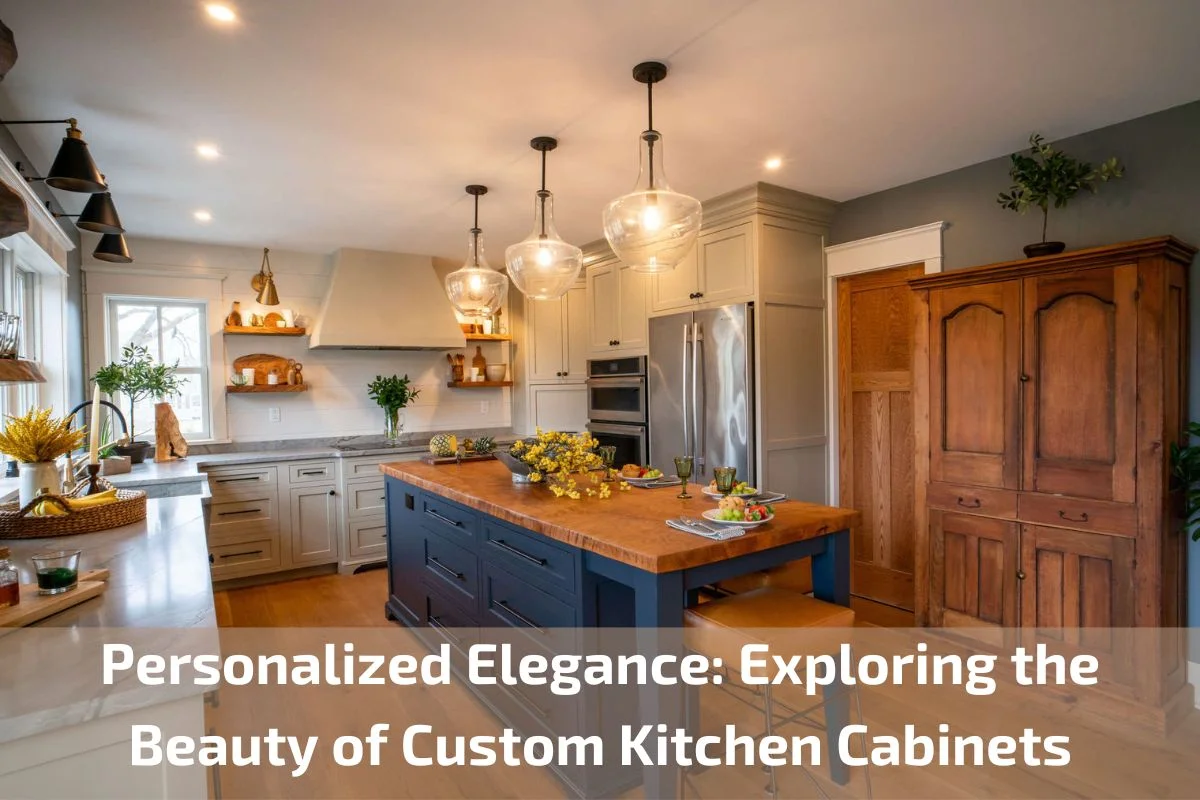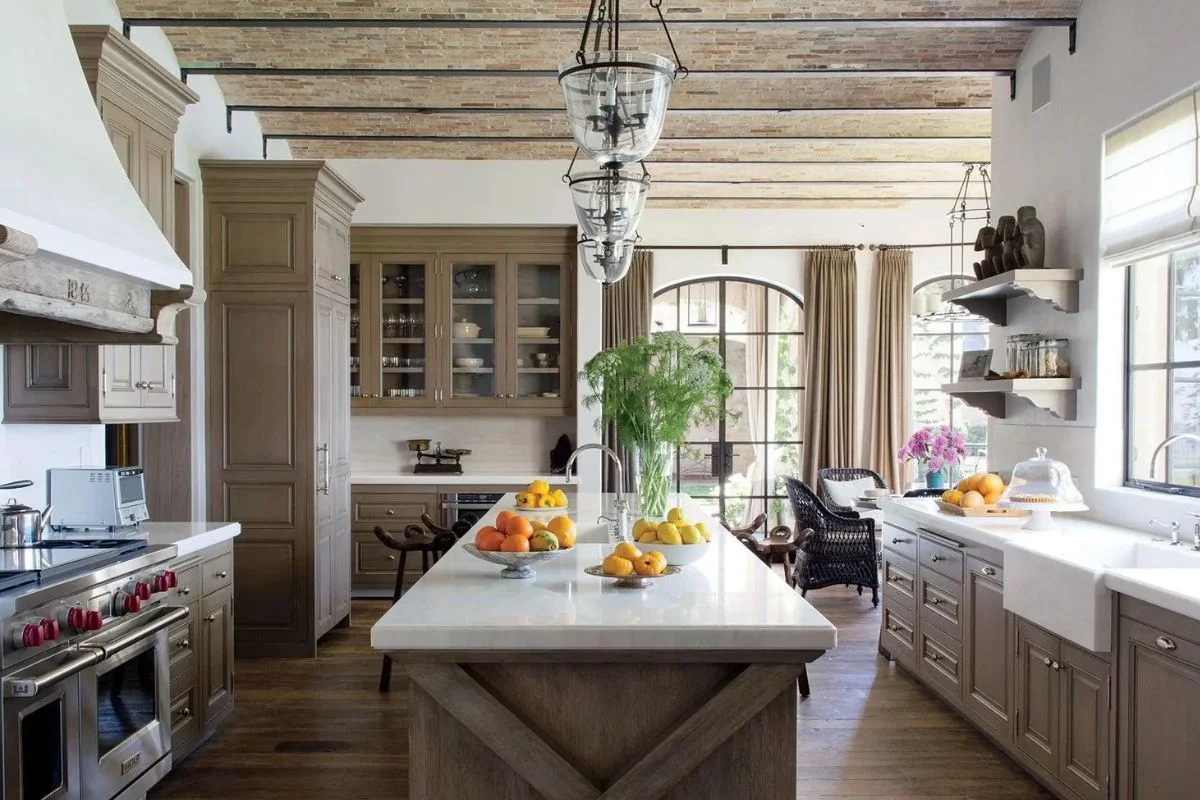Personalized Elegance: Exploring the Beauty of Custom Kitchen Cabinets
Custom kitchen cabinets offer more than just storage—they are a reflection of your personality, lifestyle, and unique sense of style. In a world where individuality is prized, personalized elegance takes center stage in the heart of the home. From the sleek lines of modern designs to the timeless charm of traditional craftsmanship, custom kitchen cabinets unlock a world of possibilities for homeowners seeking to create a space that truly speaks to them.
In this exploration of the beauty of custom kitchen cabinets, we delve into the artistry, craftsmanship, and attention to detail that define these bespoke creations. From the initial inspiration to the final installation, we’ll uncover how custom cabinets elevate the aesthetic appeal, functionality, and overall ambiance of any kitchen. So, let’s embark on a journey through the world of personalized elegance and discover how custom kitchen cabinets can transform your home into a sanctuary of style and sophistication.
Definition of custom kitchen cabinets
Custom kitchen cabinets are bespoke storage solutions specifically designed and crafted to fit the unique dimensions, layout, and aesthetic preferences of an individual homeowner’s kitchen space. Unlike pre-made or stock cabinets, custom cabinets are tailored to meet the exact specifications and requirements of the client, offering a high level of customization in terms of design, materials, finishes, and features. This level of personalization allows homeowners to create a kitchen environment that not only maximizes functionality and storage but also reflects their individual style and taste.
Importance of personalized kitchen design
The importance of personalized kitchen design lies in its ability to transform a mundane space into a reflection of individuality and functionality tailored to the homeowner’s lifestyle. Here’s why personalized kitchen design matters:
Optimal Functionality: Personalized kitchen design ensures that the layout, storage solutions, and features cater to the specific needs and habits of the homeowner. This results in a more efficient and user-friendly kitchen space where everything is easily accessible and organized according to individual preferences.
Expresses Personal Style: Just as clothing and home decor reflect personal style, the kitchen design is an extension of the homeowner’s aesthetic preferences. Customizing elements such as cabinet styles, countertop materials, and backsplash patterns allows homeowners to create a kitchen that truly reflects their taste and personality.
Enhances Home Value: A well-designed and customized kitchen adds significant value to a home. Potential buyers are often willing to pay a premium for a kitchen that meets their preferences and needs without requiring major renovations. Personalized kitchen design can also set a home apart in a competitive real estate market.
Promotes Efficiency: By tailoring the kitchen layout and features to suit specific cooking and workflow preferences, personalized design can significantly enhance efficiency in meal preparation and cleanup. This can save time and reduce stress, making everyday kitchen tasks more enjoyable.
Long-Term Satisfaction: Investing in personalized kitchen design ensures that the homeowner will be satisfied with their kitchen for years to come. By creating a space that meets their unique needs and tastes, homeowners can enjoy a sense of pride and fulfillment every time they use their kitchen.
Benefits of Custom Kitchen Cabinets
The benefits of custom kitchen cabinets are numerous, offering homeowners a range of advantages over standard, off-the-shelf options. Here’s a breakdown of why investing in custom kitchen cabinets is worth considering:
Tailored Fit: Custom kitchen cabinets are built to fit the exact dimensions of your kitchen space, maximizing storage capacity and ensuring a seamless, polished look.
Personalized Design: With custom cabinets, homeowners have the freedom to choose every aspect of the design, including materials, finishes, hardware, and organizational features. This allows for a truly personalized kitchen that reflects individual style preferences and functional needs.
Quality Craftsmanship: Custom cabinets are typically handcrafted by skilled artisans or custom cabinetmakers using high-quality materials and construction techniques. This results in superior durability and longevity compared to mass-produced options.
Optimized Storage: Custom cabinets can be tailored to accommodate specific storage needs, such as deep drawers for pots and pans, built-in spice racks, or pull-out pantry shelves. This maximizes organization and efficiency in the kitchen.
Enhanced Aesthetics: Custom cabinets offer endless design possibilities, from sleek and modern to timeless and traditional. Homeowners can create a cohesive look that complements the overall style of their home and reflects their unique taste.
Increased Home Value: A well-designed kitchen with custom cabinets can significantly enhance the resale value of a home. Potential buyers are often willing to pay more for a kitchen that is customized to their liking and requires minimal updates or renovations.
Improved Functionality: Custom cabinets can be designed to optimize workflow and usability in the kitchen, with features such as built-in lighting, integrated appliances, and specialized storage solutions that make cooking and meal preparation easier and more enjoyable.
Long-Term Investment: While custom cabinets may require a higher upfront investment compared to pre-made options, their superior quality and customization options make them a worthwhile long-term investment. They can withstand daily wear and tear and maintain their aesthetic appeal for years to come.
Factors to Consider When Choosing Custom Kitchen Cabinets
When choosing custom kitchen cabinets, several important factors should be taken into consideration to ensure that the final product meets your needs, preferences, and budget. Here are the key factors to keep in mind:
Budget Considerations: Determine your budget for custom cabinets early in the planning process. Custom cabinets can vary widely in price depending on factors such as materials, finishes, and complexity of design. Be realistic about what you can afford and prioritize features that are most important to you.
Design Options and Styles: Consider the overall design style of your kitchen and choose custom cabinets that complement it. Whether you prefer modern, traditional, transitional, or eclectic styles, there are countless design options to explore, from cabinet door styles to hardware finishes.
Material Selection: Custom cabinets can be constructed from a variety of materials, each with its own advantages and considerations. Common options include hardwoods like oak, maple, and cherry for a classic look, as well as engineered wood products like plywood or MDF for a more budget-friendly option. Other materials such as metal, glass, and laminate are also available for a more contemporary aesthetic.
Customization Features and Accessories: Think about the specific features and accessories you want to incorporate into your custom cabinets to enhance functionality and organization. This could include options like pull-out shelves, built-in spice racks, soft-close hinges, and integrated lighting. Make a list of must-have features and prioritize them based on your needs.
Space and Layout Considerations: Take accurate measurements of your kitchen space and consider the layout when designing your custom cabinets. Determine how much storage you need and plan for efficient workflow and accessibility. Consider factors such as traffic flow, proximity to appliances, and placement of work zones when designing your cabinet layout.
Hardware and Finishes: Choose hardware and finishes that complement the overall aesthetic of your kitchen and reflect your personal style. This includes cabinet knobs, pulls, hinges, and drawer slides, as well as finishes such as paint, stain, or laminate. Pay attention to the durability and maintenance requirements of different finishes to ensure they will withstand daily use.
Installation Process: Discuss the installation process with your cabinet maker or installer to understand what to expect and ensure a smooth and seamless installation. Consider factors such as lead times, scheduling, and any additional services required, such as removal of existing cabinets or modifications to plumbing or electrical fixtures.
Tips for Maintaining Custom Kitchen Cabinets
Maintaining custom kitchen cabinets is essential to preserve their beauty, functionality, and longevity. Here are some helpful tips to keep your custom cabinets looking their best:
Regular Cleaning: Wipe down cabinet surfaces regularly with a soft, damp cloth to remove dust, grease, and spills. Avoid using abrasive cleaners or harsh chemicals that can damage the finish.
Use Gentle Cleaning Solutions: For tougher stains or grease buildup, use a mild dish soap mixed with warm water to gently clean the cabinets. Avoid abrasive scrubbing pads or brushes that can scratch the surface.
Dry Thoroughly: After cleaning, be sure to dry cabinet surfaces thoroughly with a clean, dry cloth to prevent water damage and streaking.
Protect Against Moisture: Avoid excessive moisture exposure by promptly wiping up spills and splashes, especially around sinks, dishwashers, and other water sources. Consider using protective mats or trays under sinks and appliances to prevent water damage.
Avoid Heat Damage: Protect cabinet surfaces from direct heat sources such as stovetops, ovens, and dishwashers by using heat-resistant mats or trivets. Hot pots, pans, and appliances can cause damage or discoloration to cabinet finishes.
Handle with Care: Use caution when opening and closing cabinet doors and drawers to avoid slamming or excessive force that can damage hinges, drawer slides, or the cabinet frame.
Inspect Hardware Regularly: Periodically check cabinet hardware such as hinges, knobs, and drawer slides for loose screws or other signs of wear. Tighten any loose hardware as needed to ensure smooth operation.
Avoid Excessive Weight: Be mindful of the weight capacity of your cabinets and avoid overloading shelves or drawers with heavy items. Distribute weight evenly and use shelf liners or organizers to provide additional support.
Address Minor Damage Promptly: If you notice any scratches, chips, or other minor damage to your cabinets, address it promptly to prevent further deterioration. Touch up paint or finish as needed or consult a professional for repairs.
Schedule Professional Maintenance: Consider scheduling periodic professional maintenance for your custom cabinets, including inspections, cleaning, and adjustments as needed. A professional cabinet maker or installer can help ensure that your cabinets remain in optimal condition for years to come.
Conclusion
In conclusion, maintaining custom kitchen cabinets is crucial to preserving their beauty, functionality, and longevity. By following the tips outlined above, homeowners can ensure that their cabinets remain in optimal condition and continue to enhance the overall look and efficiency of their kitchen space.





0 comments